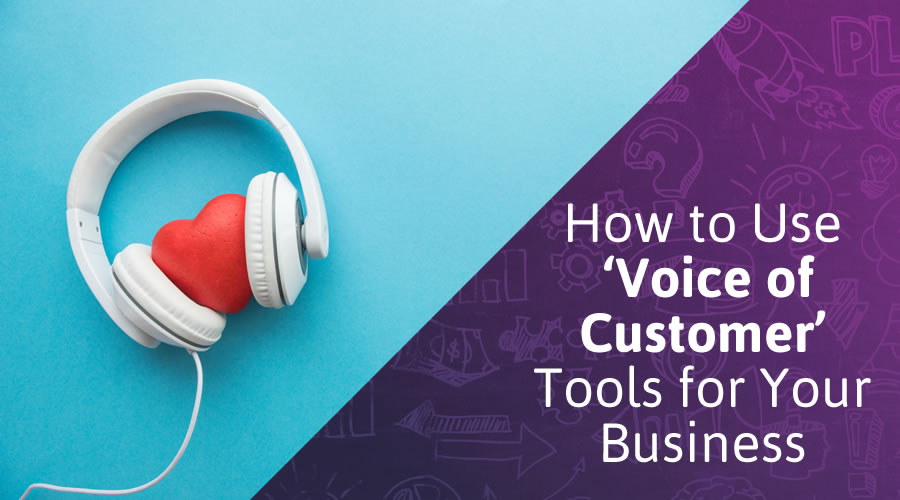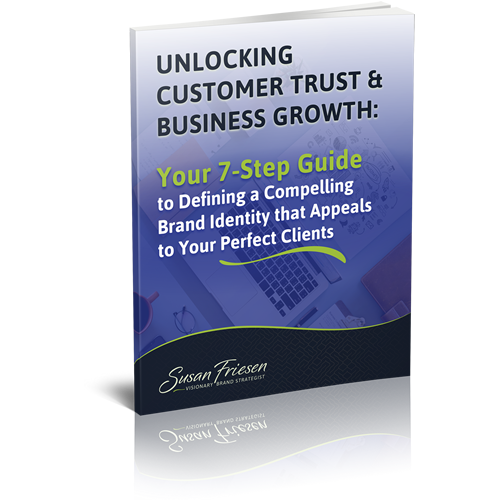Listen to Your Audience to Meet Consumer Expectations
Do you truly understand your customers? I’m not talking about creating personas, doing keyword research and looking at your demographics (although that’s important too)!
I’m referring to listening to what your audience actually wants and needs to improve the customer experience.
First, let’s look at what Voice of Customer (VoC) means.
This is a research process that captures what your audience is saying, and how that relates to your brand. Businesses do this by gathering consumer feedback, whether that’s a survey, focus group or online reviews.
Voice of Customer tools can help you:
- Explore and evaluate new products and services
- Improve consumer engagement and retention
- Uncover negative brand feedback
So, how can you use Voice of Customer tools to better your business? Here are 4 ways:
1. Surveys
You can send surveys to certain segments or after a person has bought your product or service.
Here’s an example of a company who listened and responded to what people wanted: 1-800 Contacts, the world’s largest contact lens provider. They used surveys to gather consumer expectations with a company called Qualtrics.
One respondent jokingly asked the company to send him a candy bar and guess what? They did! This led to them implementing a program where they give gifts to people.
As a result, they increased their order rate by 3.8 percent and grew their NPS 13 points in just three months. Net Promoter Score (NPS) is a management tool that is used to measure the loyalty of your customers; learn more here.
There are numerous survey tools out there, from Survey Monkey to VWO, so you can find the right format for your needs.
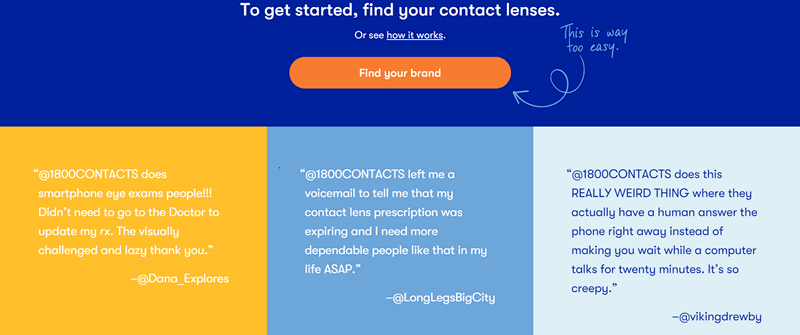
To get the best response rate, be sure to:
- Keep it brief. People don’t want to answer 50 questions about their experience. Limit your survey to about five questions, and let respondents know that it will only take a few minutes of their time.
- Give them something. Offer a discount coupon, change to win a price or a gift to show your appreciation (if possible).
- Remind them how important it is. Thank people for taking the time and tell them that you’re using their feedback to improve your processes.
Here are some great questions to ask that should elicit some useful responses:
- How can we improve your customer experience?
- Would you recommend our service or product and why or why not?
- What did you like/dislike about your experience?
- Would you buy our product or service again?
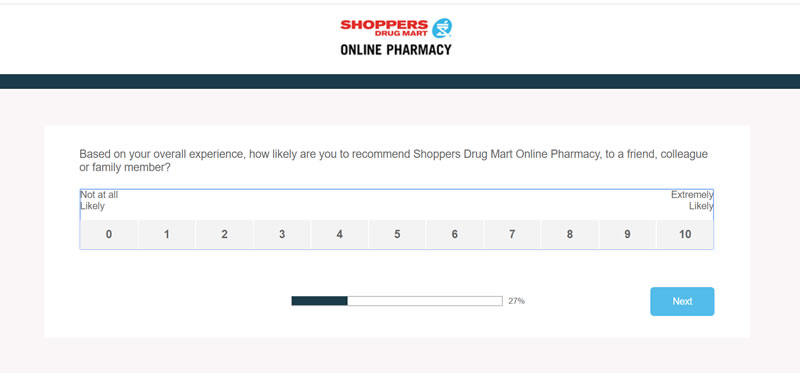
2. Interviews
Usually done in-person or on the phone, the interview process lets you talk one-on-one or to a group of people about your product or service. This method gained popularity after it was popularized in a book called The Lean Startup by Eric Ries.
Discovering consumer expectations this way has a higher cost, but it can provide amazing insight and impress your consumers with a more personal type of interaction.
Not sure? Here’s an example from Febreze. Originally, P&G tried to sell their scented sprays by claiming it fixed smells in your home, with dismal results. The problem was that most people don’t know or don’t think that their homes smell, so why would they need Febreze?
So P&G hired a research company to interview people on how they used the product. They heard that those who sprayed Febreze did it to freshen a room as part of their house-cleaning routine, not to cover up odours.
As a result, the company positioned Febreze as a product to enhance your existing routine. Within two months, sales of the product doubled.
3. Your Website
Most marketers look at their site data to gain insights around things like how many people visited in a given time period, what their most popular landing pages are and which keywords people are using to find them.
However, by taking analytics to the next level and capturing behaviour, you can learn even more about what your audience is doing. From where they’re scrolling to on a given page to heat maps that show which content they’re interacting with, there are many tools that can show you what your visitors want and need from you.
Here’s an example of how the analytics company Hotjar uses heat maps to understand the users of some of the world’s biggest brands.
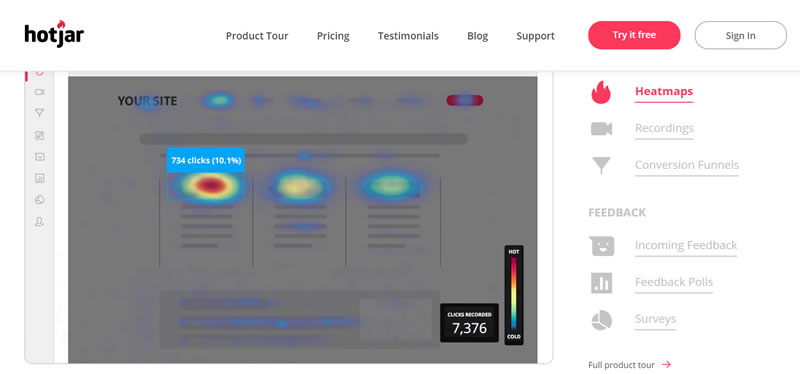
4. Social Media
Platforms like Facebook, Twitter, LinkedIn and Instagram can be valuable places to collect data on your visitors and fans.
By observing what your audience is doing, engaging with people who interact with your brand and starting conversations, you can learn so much about the people who are interested in your brand.
Also, social media now serves as a customer service platform; rather than write a letter or an email to a business, people now turn to social media to give praise or to complain.
As tempting as it may be to delete negative comments or ignore them in the hopes they’ll soon be buried, don’t! As Bill Gates said: “Your most unhappy customers are your greatest source of learning.”
READ: Top 13 Ways Landing Pages Can Build Your Business

For many entrepreneurs and business owners, the online marketing scene can very confusing and overwhelming. All that marketing terminology that’s constantly being thrown out there on a daily basis is enough to make one pull the covers over their head and hope it all just goes away.
This blog article explores how to create landing pages that will help boost your marketing efforts. Read more.
Consumer expectations are higher than ever, and it’s critical to understand the people who are potentially buying what you’re selling.
By using the right Voice of Customer tools, you can be sure to give your audience exactly what they want, when and how they want it.
Does your business use VoC tools to help gather vital customer data? Let us know in the comments section below!
To your business success,
Susan Friesen
P.S. If you liked the article, you might want to subscribe to our newsletter. We publish tons of valuable content to help you learn more about marketing, and subscribing is the best way to ensure you don’t miss out. Additionally, if you’d like to learn more about building a search engine optimized website, click here for our free website guide.
